History:
 The M18 Hellcat was an American tank destroyer of World War II. Armed with a 76 mm cannon, the vehicle was the fastest tracked, armored fighting vehicle during World War II with a top speed up to 92 km/h,and Buick nicknamed it the Hellcat. The speed was attained by keeping armor to a minimum, no more than 1" thick. Hellcat crews took advantage of the vehicle's speed to minimize the enemy's ability to pierce its thin armor. Hellcats were used to penetrate the sides and back of the heavily armored Tiger and Panther tanks used by the Germans. Utilized in the western front and in D-Day, the Hellcat, along with the Sherman Firefly and M10 Wolverine, was the main firepower in the invasion of Europe.
The M18 Hellcat was an American tank destroyer of World War II. Armed with a 76 mm cannon, the vehicle was the fastest tracked, armored fighting vehicle during World War II with a top speed up to 92 km/h,and Buick nicknamed it the Hellcat. The speed was attained by keeping armor to a minimum, no more than 1" thick. Hellcat crews took advantage of the vehicle's speed to minimize the enemy's ability to pierce its thin armor. Hellcats were used to penetrate the sides and back of the heavily armored Tiger and Panther tanks used by the Germans. Utilized in the western front and in D-Day, the Hellcat, along with the Sherman Firefly and M10 Wolverine, was the main firepower in the invasion of Europe.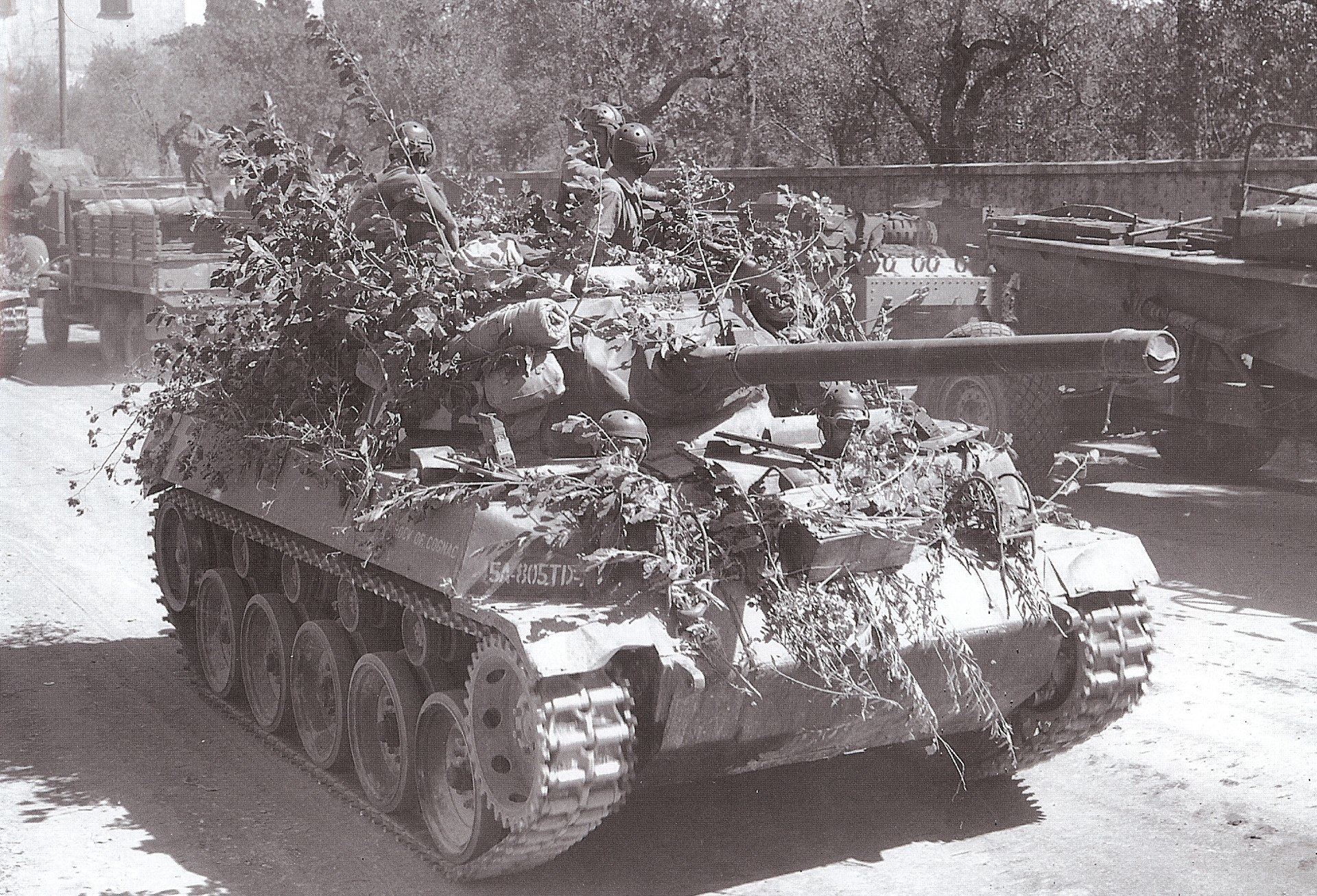 |
| 805th TD Battalion at Fontebuona, Italy on Sept 11, 1944 |
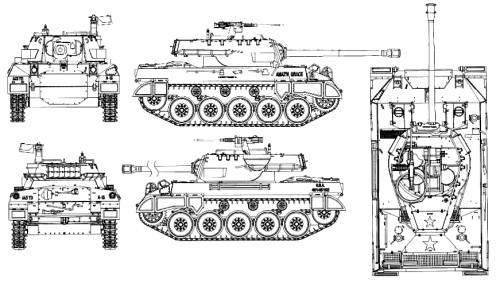 |
| Blueprints of the M18 "Hellcat" |
The M18 originated in the design studio of Harley Earl from the Buick motor company division of General Motors, whose team also worked extensively on early camouflage paint. Even the Hellcat logo on the M18’s front corner and patches worn by its crew was designed by Earl.
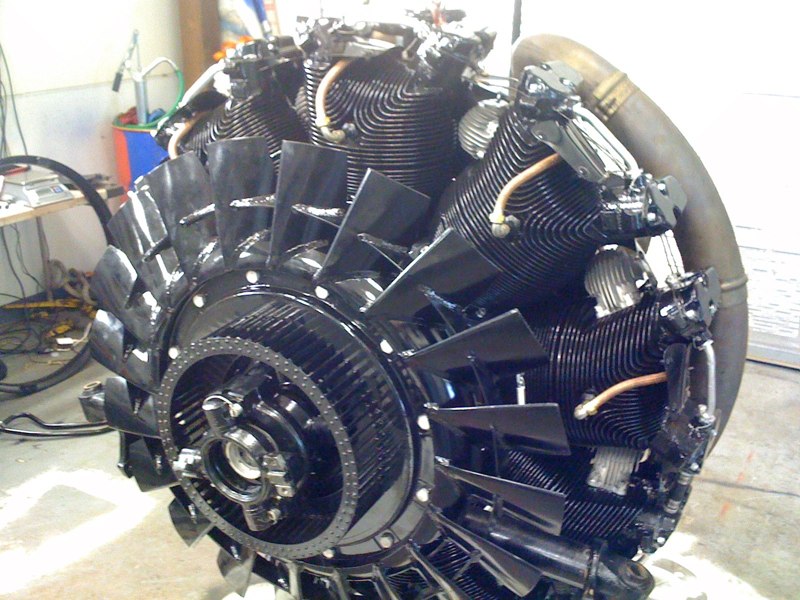 |
| Restored R975-C4 |
Buick engineers developed an innovative torsion bar suspension that provided a steady ride. Though it weighed about 20 tons, the was capable of traveling upwards of 92 km/h. Its power came from a nine-cylinder, 450-horsepower radial-type aircraft engine paired with a three-speed Hydramatic transmission.
Once developed, the Hellcat was tested in the same manner as passenger cars before and after it, at the General Motors Milford Proving Ground. Top speed testing was done on a paved, banked oval and ride quality tests were done over specially developed stretches of bumps.
Production of the M18 Hellcat began in mid-1943 and ended in October 1944.
 |
| Hellcat in fall of 1944 |
The M18's new design incorporated several innovative maintenance features. The Wright R-975 engine was mounted on steel rollers that allowed maintenance crews to disconnect it easily from the transmission, roll it out onto the lowered engine rear cover, service it, and then reconnect it to the transmission. The transmission could also easily be removed and rolled out onto a front deck plate to facilitate quick inspection and repairs.
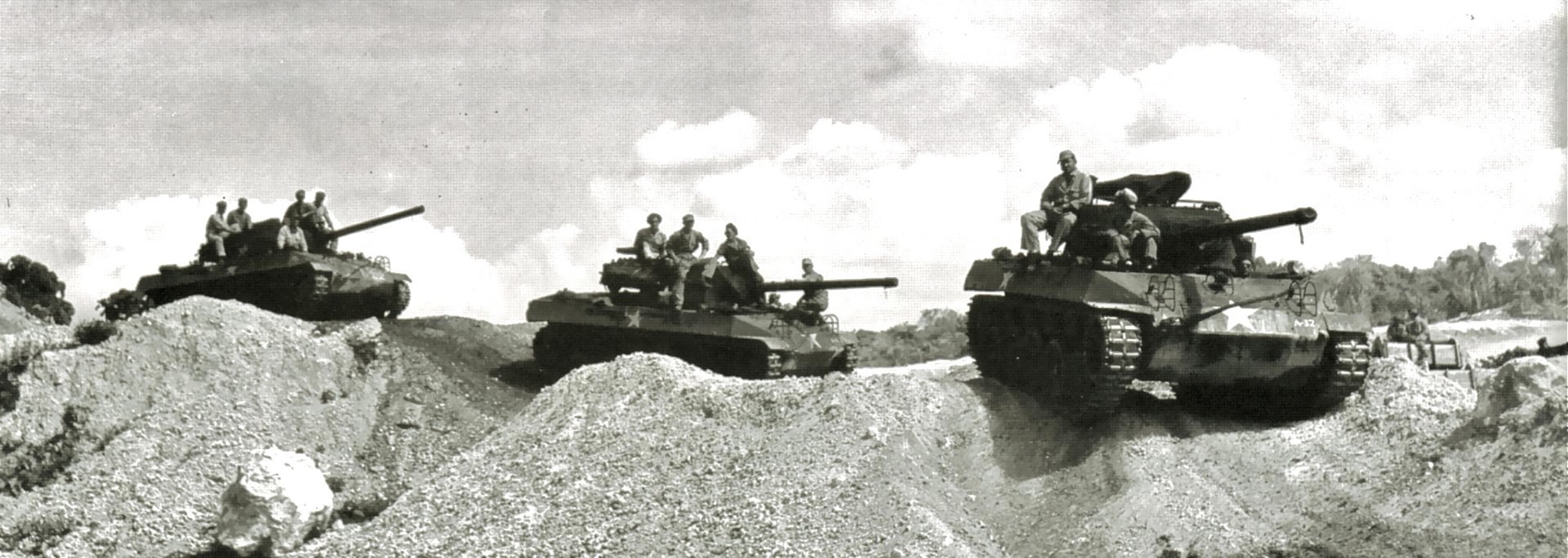 |
| Company A, 637th TD Battalion at Espiritu Santo, New Hebrides islands Aug 22, 1944 |
In contrast to the M10 tank destroyer, which used the chassis of the M4 Sherman, the M18 Hellcat was designed from the start to be a fast tank destroyer. As a result it was smaller, lighter, and significantly faster, but carried the same gun as the Sherman 76 mm models. The M18 carried a five-man crew as well as 45 rounds of main gun ammunition, and an M2 Browning machine gun on a flexible ring mount for use against aircraft and infantry.
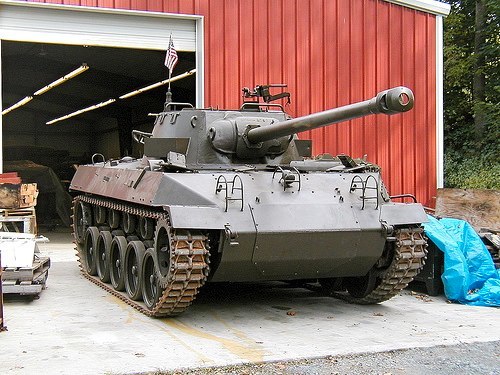 |
| M18 at Sutton Hall Rochford, Essex UK |
[Adopted from wikipedia (edited) - Photos from: M18 Hellcat.com, a "fan site" of M18 "Hellcat" tank. Blueprints photgraphs from The-blueprints.com]

No comments:
Post a Comment